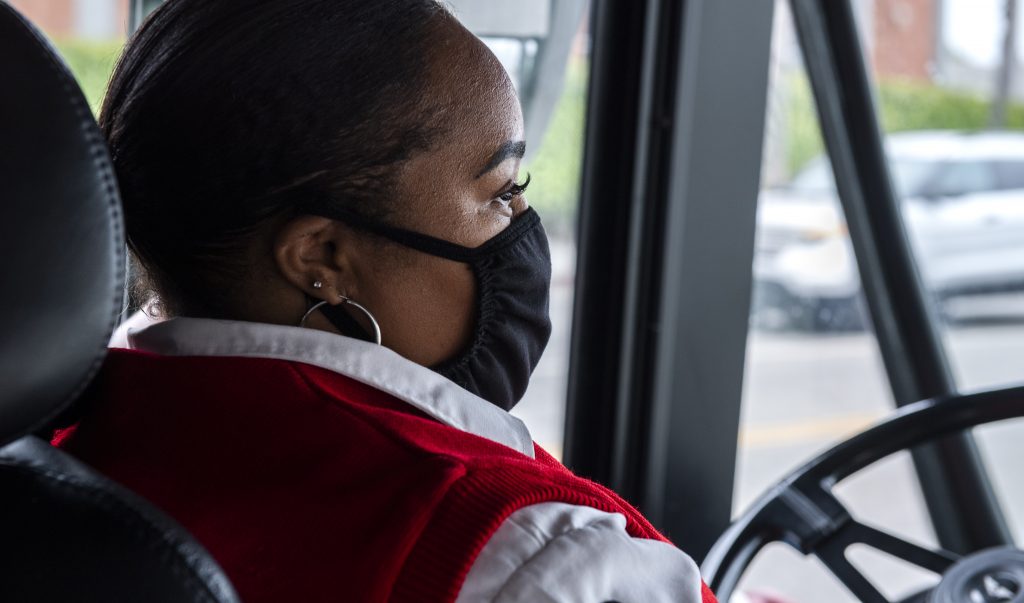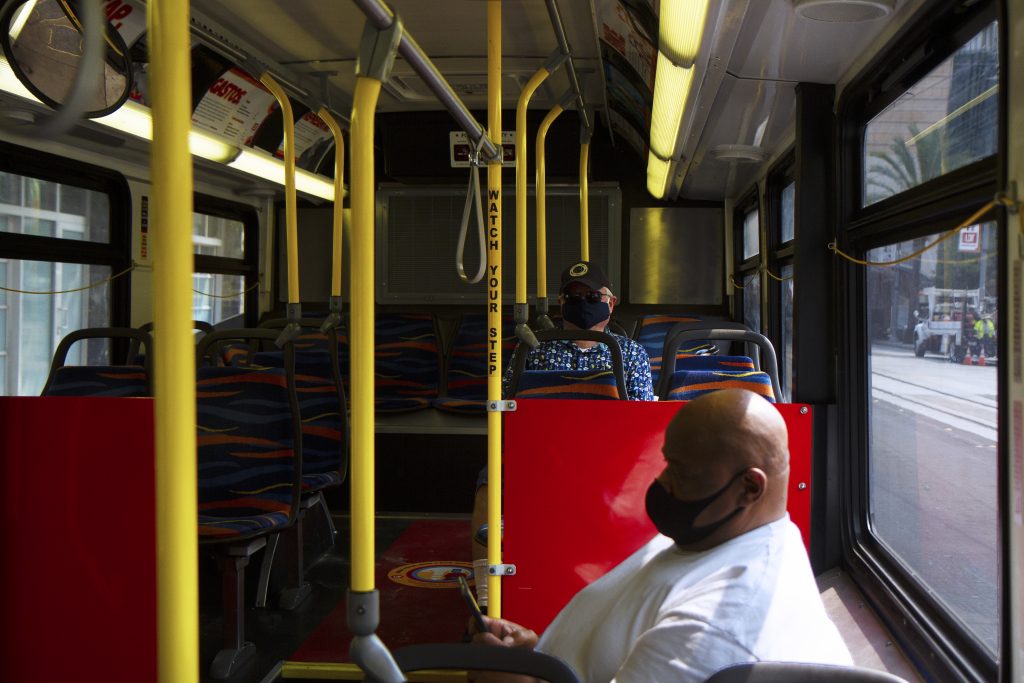
On the Job is a standing feature in the Long Beach Business Journal, where we spend a day with workers in different professions throughout the city. If you have a suggestion, please email alena@lbbj.com.
Shellee Franks has been driving buses across Long Beach and beyond for 15 years. On this chilly, overcast morning—a moment of relief after a relentlessly hot Labor Day weekend—Franks is on the 173 Line, Studebaker to Downtown.
The longest bus line in the Long Beach transit system, it covers over 30 miles worth of pavement and stops in six cities: Long Beach, Lakewood, Hawaiian Gardens, Artesia, Cerritos and Norwalk.
Bus drivers, or operators as the agency prefers to call them, provide an essential service for a section of Southern California’s population that is often forgotten: those who don’t drive, be it for financial or other reasons.
But this morning, Line 173 is fairly empty. A few passengers who boarded at the Downtown Transit Center have all exited by the time the bus swings around the Traffic Circle. It cruises by the Walter Pyramid, presiding over an eerily empty Cal State Long Beach Campus, unnoticed.
Normally a busy portion of the route, Franks passes by the campus bus shelters without picking up any passengers. With school moved online as a result of the pandemic, there are no students to pick up or drop off.
Students, especially those attending the city’s public schools, make up a significant portion of Long Beach Transit’s ridership.
Because the Long Beach Unified School District, the third largest in the state, doesn’t have its own yellow bus program, the agency is responsible for transporting students to and from schools. Under normal circumstances, those students account for 40% of the agency’s overall ridership.
Because of the dramatic decline in ridership during the pandemic, Long Beach Transit operates on a reduced “Sunday” schedule, with most buses running on a once-per-hour or less frequent tact.
To fill in any gaps, the agency sends out “tripper” buses like the one Franks is driving this Tuesday morning, meant to pick up any overflow from the bus that departed 15 minutes before her. Franks adds up the number of passengers in her head and writes them down on a clipboard.
“They’re trying to see how many buses they really need out here,” she said.
Long Beach Transit’s drivers have been working three days per week instead of the usual five because of the system’s reduced schedule. So far the agency has been able to avoid pay cuts or layoffs, in part due to financial assistance offered through the federal CARES Act.

For Franks, the reduced workload has been an important opportunity to recharge. Despite the added protections—passengers now board buses through the backdoor and the seating area is separated from the driver’s cabin by a yellow metal chain—Franks said driving a bus during a pandemic has been mentally taxing.
“I did get tested, but that doesn’t ensure that you won’t get it as soon as you walk off,” she said. It’s hard for her to stay away from her family to observe social distancing guidelines, when her job requires her to interact with strangers on a daily basis, she noted.
“We can’t control it, because we have to come to work,” Franks added.
Pandemic or not, being in close contact with the public on a day-to-day basis is the most difficult part of the job, she explained. “You have to have patience and understanding,” Franks said. “Because a lot of people are going through stuff and they take it out on you.”
Having grown up in a housing project in Compton, Franks said she’s always had a thick skin, a trait that has helped her deal with the adverse situations she’s encountered on the job. “You can not be soft out here,” she said.
From racist insults to arguments over fare payment, Franks said handling tension is part of the job and drivers tend to harden up over time.
“When I didn’t use to drive buses but ride buses as a teenager, I used to think: Why does the bus driver always have an attitude?” she said. “Becoming a bus driver, I’ve seen the other side of it. We’re human, just like you are.”
The most important quality for a bus driver, according to Franks, is an ability to multitask and adapt. “You have to learn to adjust yourself. Each bus, each situation,” she said. This year, that includes a global health crisis.
To Franks, resting her hands on the steering wheel and her foot on the gas pedal is almost therapeutic.
“You know when you overthink stuff?,” she asked. “When you drive, all you’re thinking about is driving.”
